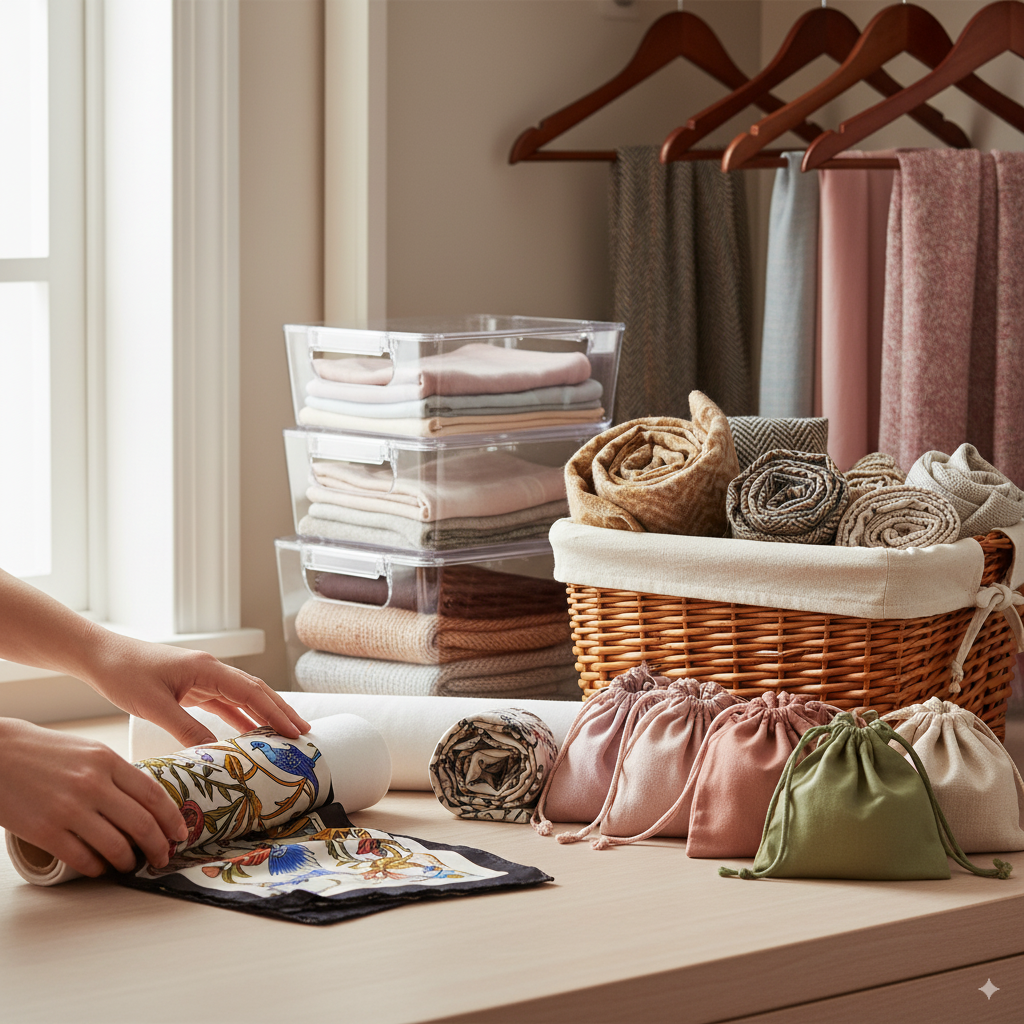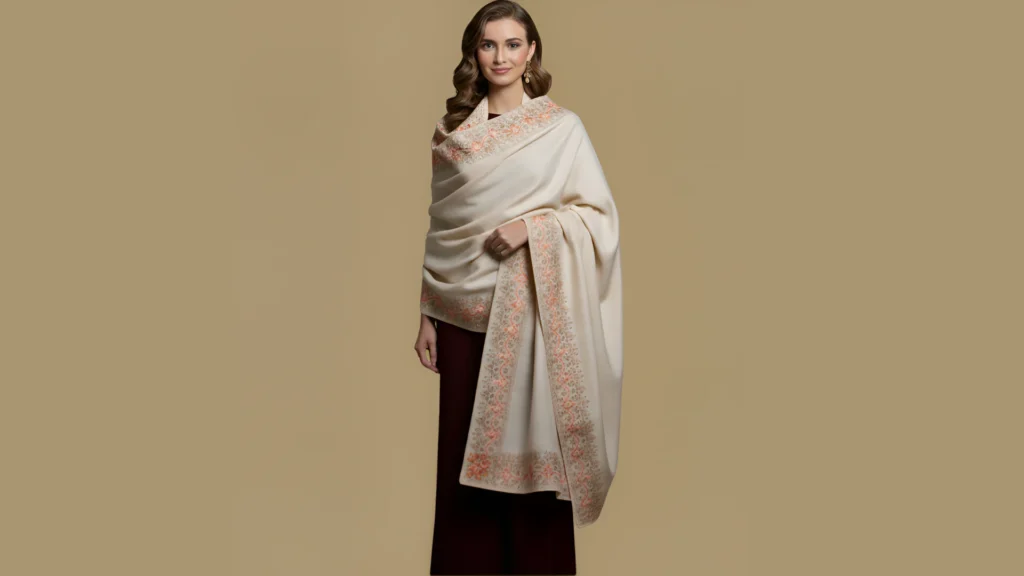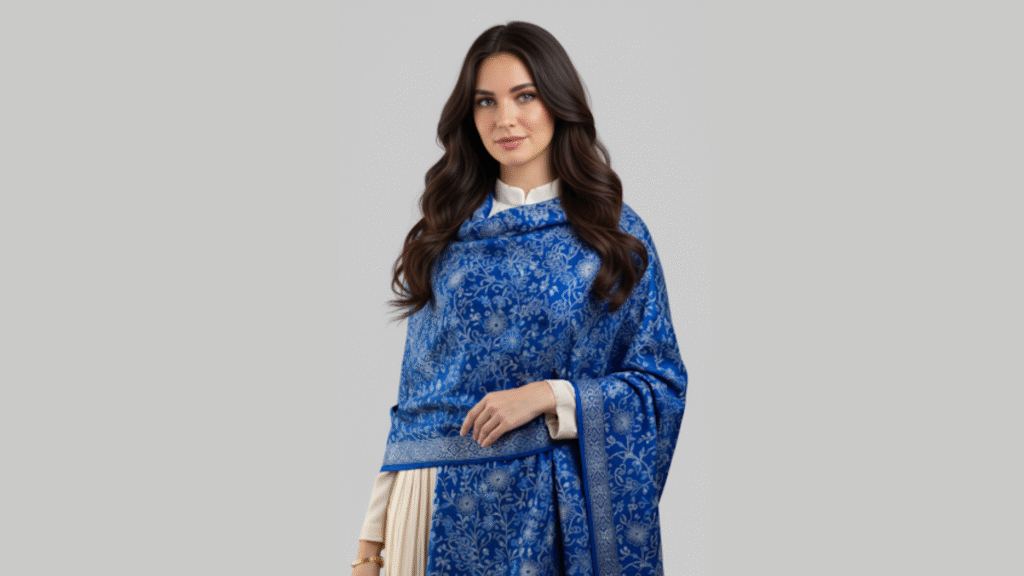Scarves are made with a variety of materials, including silk, pashmina, cashmere, and wool. Each type of fabric responds differently to how it is folded, hung, or stored. Some scarves are handwoven or embroidered, making them more fragile than others.
Many people do not realise that storing scarves incorrectly can lead to damage over time. Folds, moisture, and sunlight can affect both the look and feel of the fabric. Careful storage keeps colours true and the fabric in its original condition.
This article explains why delicate scarves require special storage and outlines practical ways to prevent common forms of damage.
Preserving Fabric Quality: How to Store Scarves for Long-Term Use
When scarves made from fine materials like silk, pashmina, cashmere, and wool sit folded in a drawer for months, something happens that most people don’t expect. The fabric begins to remember those creases. What starts as a temporary fold can become a permanent line that won’t smooth out, even with careful pressing.
The damage goes beyond wrinkles. Sharp edges from hangers can create snags that pull threads loose. Heavy scarves hung incorrectly stretch under their own weight, changing their shape forever. Light—whether from windows or overhead fixtures—slowly bleaches colours, leaving some areas faded while others remain vibrant.
For handcrafted pieces with embroidery or beadwork, the risks multiply:
- Thread tension: Improper folding stresses delicate stitching
- Bead weight: Heavy embellishments can stretch fabric when stored flat
- Friction damage: Rough surfaces catch on raised threads and decorative elements
Quick Preparation Before Storage
The first step in learning how to store scarves correctly is preparation: ensuring each piece is clean, completely dry, and free of creases.
Clean and Air-Dry Completely
Oils from skin, traces of perfume, and even invisible moisture cling to fabric after wearing. These substances attract dirt and can cause permanent stains if left untreated. Natural fibres like pure pashmina and cashmere are particularly vulnerable—trapped moisture creates the perfect environment for mould and mildew to develop.
The solution is straightforward: lay the scarf flat on a clean towel in a room with good air circulation. Avoid direct sunlight, which can fade colours while the fabric dries.
Remove Wrinkles Gently
A steamer held at arm’s length works well for delicate fabrics. The gentle moisture relaxes fibres without the harsh contact of an iron. For handwoven scarves without embellishments, placing them between two clean towels and applying light pressure smooths minor wrinkles safely.
Heat from traditional irons can damage silk and wool fibres, so this gentler approach protects the fabric’s natural structure.
Sort by Fabric Type and Use
Grouping scarves by material type—silk with silk, wool with wool—makes storage decisions easier. Separating frequently worn pieces from seasonal items also reduces unnecessary handling of delicate fabrics.
12 Storage Methods That Prevent Damage
1. Non-Slip Velvet Hangers
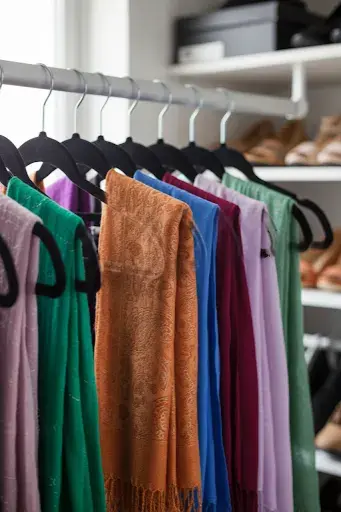
Velvet hangers grip lightweight scarves without the metal clips that can leave permanent marks. The soft surface prevents snagging, while the slim profile saves closet space.
Materials needed: Velvet hangers, adequate closet space away from direct light
Best for: Silk scarves, lightweight wraps, daily-use pieces
2. Wooden Scarf Rings
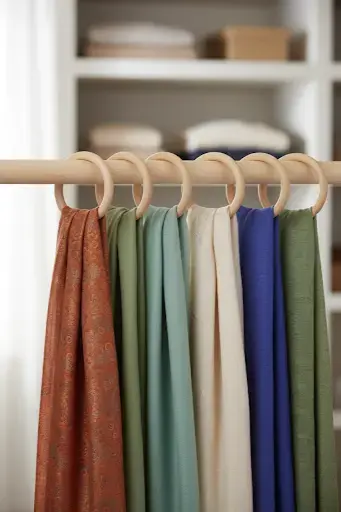
Smooth wooden rings threaded onto a closet rod display scarves without creating pressure points. This method allows air circulation around each piece while keeping them easily visible.
Materials needed: Unfinished wooden rings, closet rod
Best for: Delicate embroidery, scarves worn frequently
3. Drawer Dividers for Organised Storage
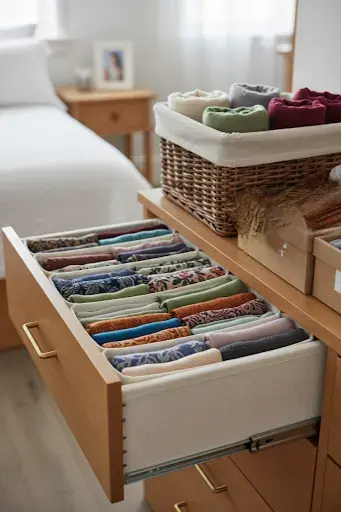
Adjustable dividers create individual sections within drawers, preventing scarves from tangling together. This scarf organization method works particularly well when scarves are folded into thirds and filed vertically like documents.
Materials needed: Adjustable drawer dividers, cotton drawer lining
Best for: Large collections, seasonal rotation
4. Archival Boxes with Acid-Free Tissue
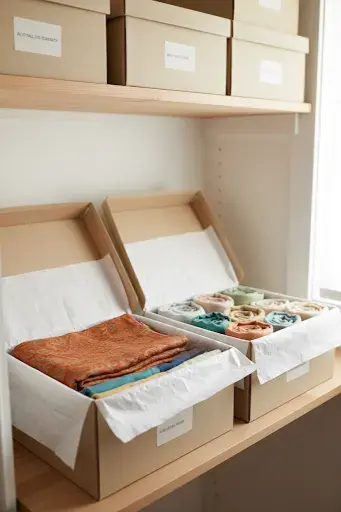
If you’re wondering how to store scarves for long-term preservation, archival-quality boxes with acid-free tissue are the gold standard. This museum-level method prevents creasing and yellowing while keeping delicate fibres safe for decades. Acid-free tissue paper prevents the yellowing that occurs when regular paper touches fabric over time. The flat storage eliminates fold lines entirely.
Materials needed: Archival-quality boxes, acid-free tissue paper
Best for: Vintage pieces, long-term storage, heirloom scarves
5. Fabric-Lined Baskets
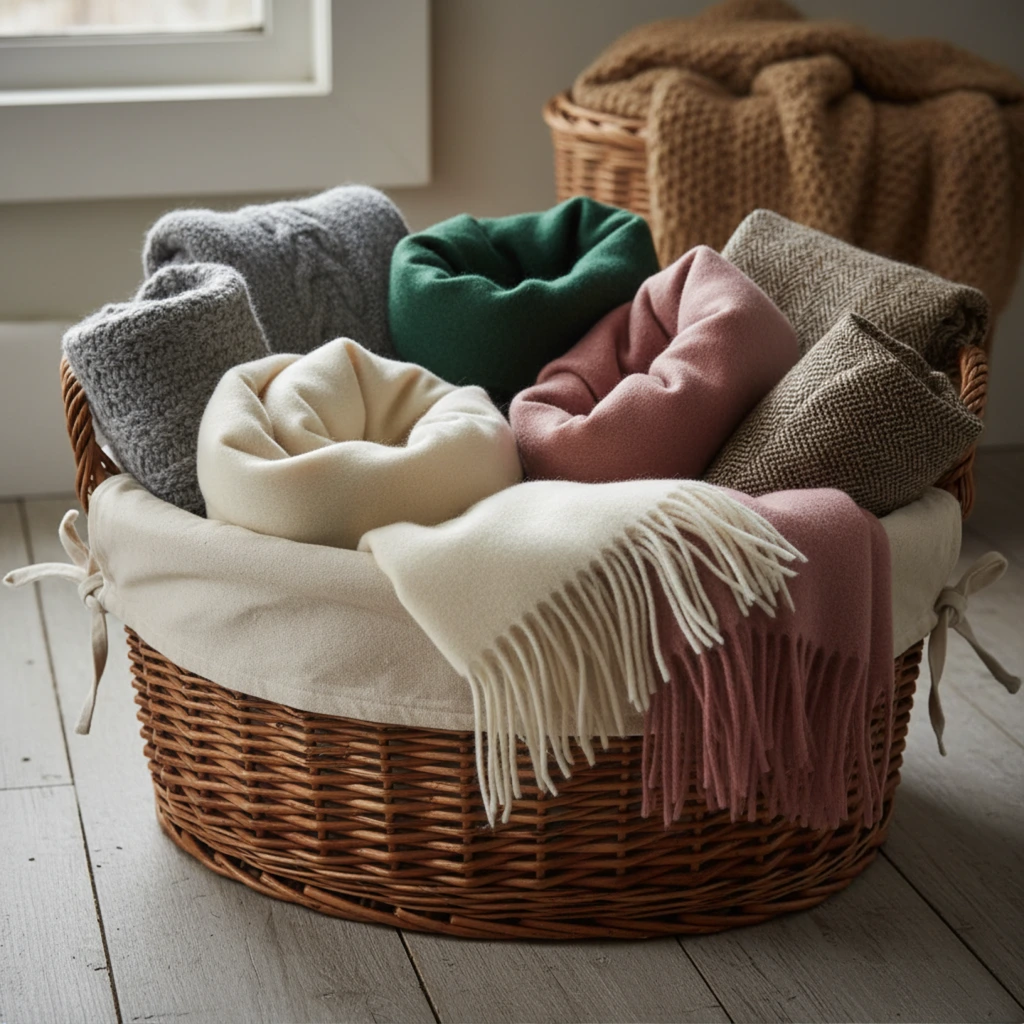
Natural fibre baskets lined with cotton fabric provide breathable storage that prevents moisture buildup. The soft lining protects against snags while allowing air circulation.
Materials needed: Wicker or bamboo baskets, cotton lining fabricBest for: Wool and cashmere pieces, everyday storage
6. Clear Storage Bins

Transparent containers make identification easy without handling multiple scarves. Look for bins with small ventilation holes to prevent moisture accumulation.
Materials needed: Clear plastic bins with secure lids, cotton lining
Best for: Off-season storage, large collections
7. Cedar-Lined Storage

Cedar naturally repels moths and other insects that damage wool and cashmere. The wood also absorbs excess moisture while releasing a pleasant, subtle fragrance.
Materials needed: Cedar boards or sachets, shelf space
Best for: Wool scarves, moth-prone natural fibres
8. Wall-Mounted Display Racks
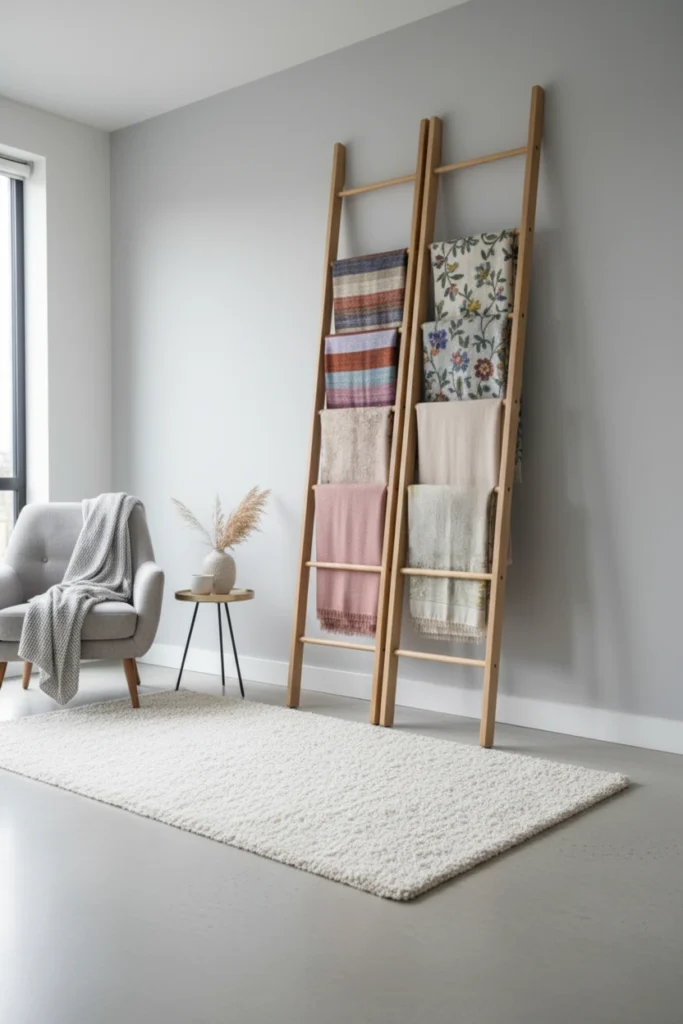
A wooden ladder or specialised rack mounted on the wall turns beautiful scarves into room decoration while keeping them easily accessible. This method eliminates all folding and hanging stress.
Materials needed: Wall-mounted rack, appropriate hardware
Best for: Decorative pieces, frequently worn scarves
9. Over-Door Storage Solutions
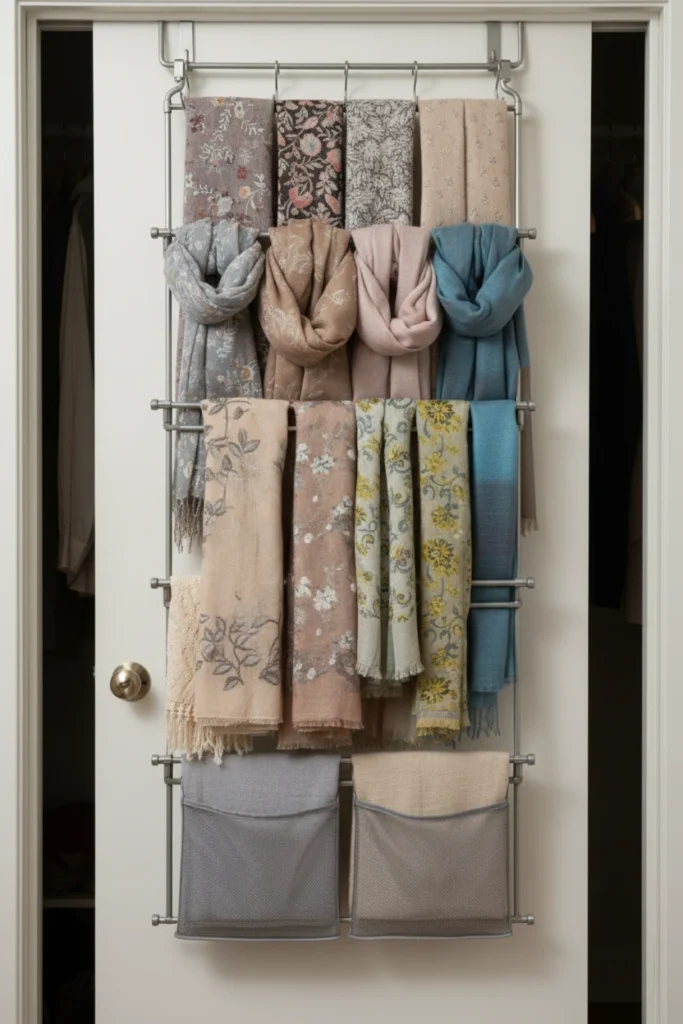
Racks that hang over door tops utilise otherwise wasted space. Multiple hooks or bars accommodate several scarves without crowding.
Materials needed: Over-door rack, adequate door clearance
Best for: Small spaces, rental properties
10. Rolling Method with Tubes
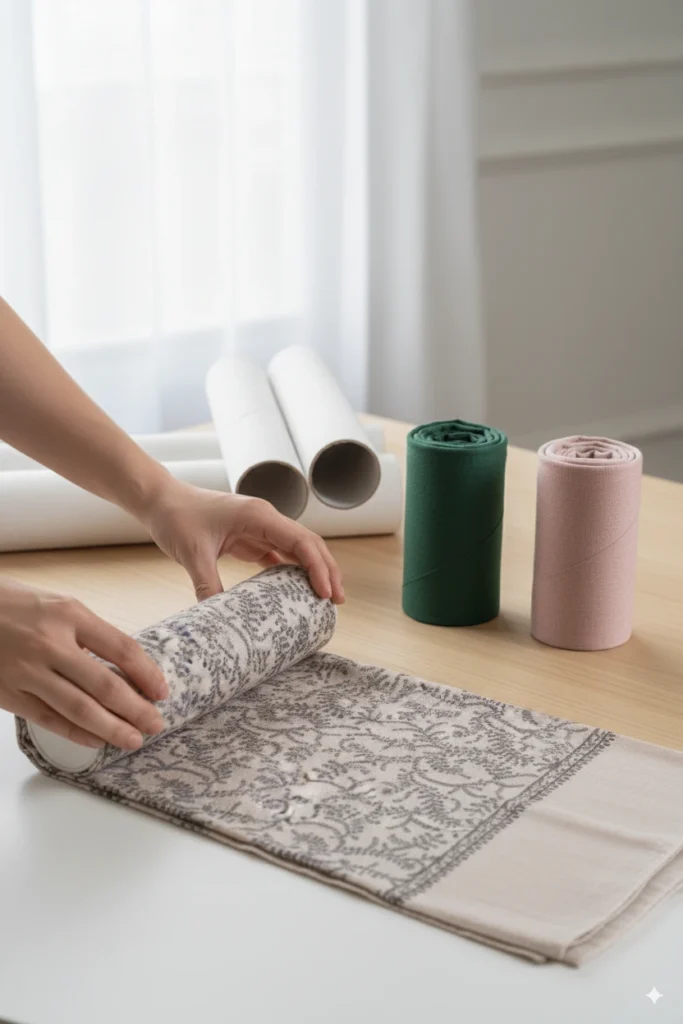
Rolling scarves around padded tubes prevents creasing entirely. This technique works especially well for silk scarves and other wrinkle-prone materials.
Materials needed: Cardboard tubes, soft fabric wrappingBest for: Silk scarves, travel storage, wrinkle prevention
11. Compartment Boxes
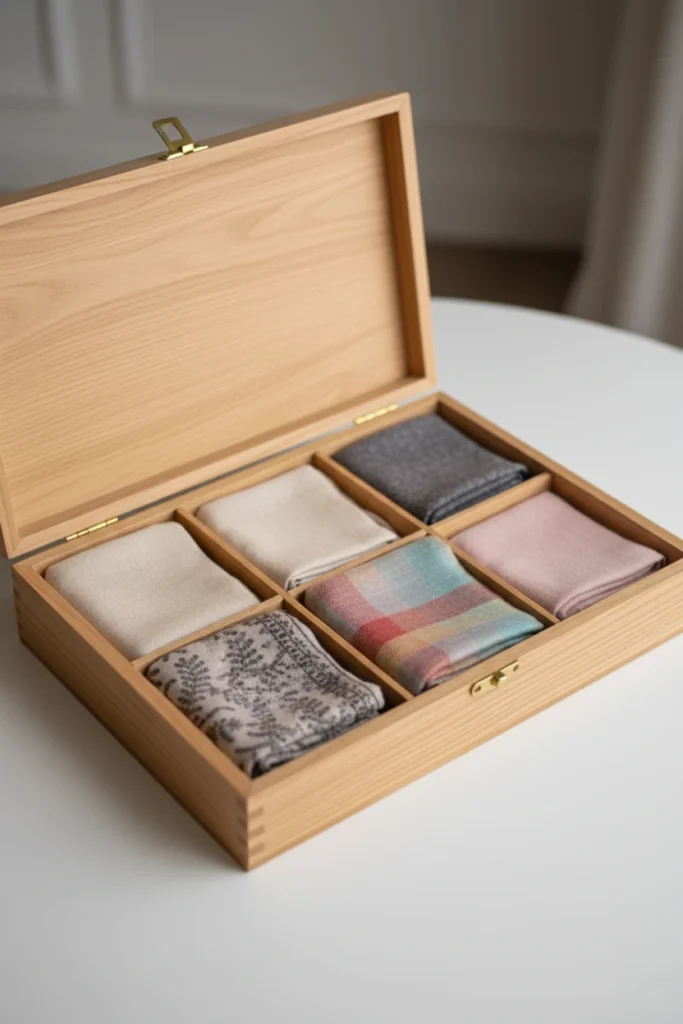
Individual compartments prevent scarves from rubbing against each other, reducing friction damage. This method works well for smaller scarves and delicate pieces.
Materials needed: Divided storage boxes, tissue paper
Best for: Small scarves, jewellery scarves, delicate pieces
12. Travel Pouches

Soft cotton or silk pouches protect scarves during transport while allowing fabric to breathe. Unlike plastic bags, these pouches prevent moisture buildup.
Materials needed: Breathable fabric pouches
Best for: Travel, temporary storage, protecting individual pieces
Daily vs Long-Term Storage Approaches
For everyday access: Velvet hangers, scarf rings, and drawer dividers keep frequently worn pieces within easy reach while maintaining their condition.
For seasonal storage: Archival boxes, cedar-lined containers, and acid-free tissue provide museum-level protection for pieces stored for months at a time.
When you understand how to store scarves daily versus seasonally, you avoid two extremes, messy access now or long-term damage later
Fabric-Specific Storage Guidelines
Different fabrics demand unique approaches. Whether it’s silk, cashmere, or wool, understanding how to store scarves by fabric type ensures each piece retains its texture, colour, and shape.
Silk Requires Smooth Surfaces
Silk fibres catch on rough textures and sharp edges. Smooth storage surfaces and minimal folding preserve the natural drape that makes silk scarves so elegant.
Pashmina and Cashmere Need Breathing Room
These ultra-fine fibres lose their loft when compressed. Gentle handling and breathable storage maintain the insulating properties and soft texture that make these materials so prized.
Wool Attracts Moths
Natural wool fibres provide food for moth larvae. Cedar deterrents and thorough cleaning before storage protect against insect damage.
Protection from Pests and the Environment
Natural Deterrents Work Best
Cedar blocks and lavender sachets repel moths without chemical residues that can stain delicate fabrics:
- Cedar: Refreshed by light sanding every six months
- Lavender: Replaced annually when the scent fades
- Rosemary: Natural alternative that insects avoid
Climate Control Matters
The ideal storage environment maintains 45-55% humidity and moderate temperatures. Basements and attics, with their fluctuating conditions, can damage natural fibres through moisture extremes.
Small Space Solutions
Vertical Storage Maximises Limited Space
Multi-level approaches work in compact areas:
- Over-door racks utilise unused vertical space
- Under-bed containers keep seasonal pieces accessible but hidden
- Wall-mounted solutions free up valuable drawer and closet space
Caring for Embellished Pieces
Hand-embroidered scarves and beaded pieces require special consideration. The raised threads and decorative elements that make these pieces beautiful also make them vulnerable to damage.
Padding supports delicate stitching: Soft cotton or tissue paper placed under embroidered areas prevents thread stress when scarves are stored flat.
Box storage protects embellishments: Flat storage with tissue layers cushions beadwork and prevents heavy decorative elements from stretching the base fabric.
Preserving Artisan Craftsmanship
Every time a handcrafted scarf is stored with care, the hours of work that created it are honoured. The artisan who spent weeks weaving threads or months completing intricate embroidery trusted that their creation would be valued and protected.
This careful approach to storage reflects the same attention to detail that goes into creating each piece. It acknowledges that these scarves carry more than warmth—they carry tradition, skill, and cultural heritage that deserves preservation.
For those who appreciate the artistry behind handcrafted textiles, Kashmir Bloom’s collection showcases the traditional techniques that make proper storage so worthwhile.
FAQ’s on How to Store Scarves
How often do cashmere scarves need to be refolded during storage?
Refolding cashmere scarves every two to three months prevents permanent creases and allows the fibres to recover their natural shape.
Can silk scarves be stored in direct sunlight without fading?
Silk scarves fade when exposed to direct sunlight, so storage in dark areas away from windows preserves their original colours.
What humidity level prevents mould in wool scarf storage?
Maintaining humidity between 45-55% prevents both mould growth and excessive dryness that can make wool fibres brittle.
Does vacuum sealing damage the loft of cashmere scarves?
Vacuum sealing compresses cashmere fibres permanently, reducing the natural loft that provides warmth and softness.
What’s the safest way to decide how to store scarves made of silk versus wool?
Silk should be kept on smooth, padded surfaces away from sunlight, while wool benefits from cedar-lined storage that repels moths. Matching the method to the fabric is the key to long-lasting wear.
How do you pack hand-embroidered scarves for air travel?
Hand-embroidered scarves travel safely in soft pouches with padding around raised embellishments, avoiding folds that stress the stitching.
Curious to experience the beauty and craftsmanship of our scarves up close?
Visit us at Kashmir Bloom, 1532 Pershore Rd, Birmingham, and discover how our carefully crafted scarves can be styled to perfection. Learn about the best ways to store and care for them to ensure they remain as timeless as the tradition they represent. For a personalized styling consultation, reach out to us at hello@kashmirbloom.com or call 0121 798 0032 to book your appointment.

